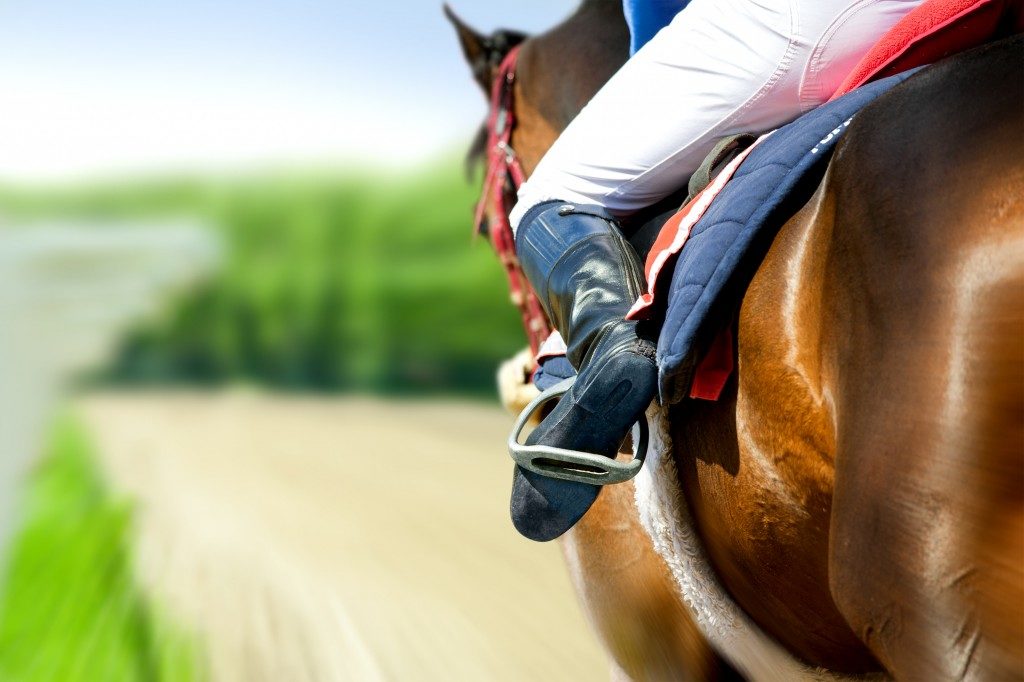If you’ve experienced horseback riding or have just watched from afar, you may have noticed the complicated-looking gear that horses wear and you’ve probably wondered what they need them for. You’d most likely be familiar with the saddle, the one where you sit, but what you might not know is that there are actually different types of it. Gear like headstalls and bridles may not be familiar to you, but they are basic equipment necessary for horseback riding.
If you are interested in horseback riding but has yet to obtain information about the basic gear, here’s a simple guide about the pieces of equipment and their functions:
1. Saddle
As previously mentioned, it’s the seat placed at the horse’s back. Apart from comfort, it is used for proper control, support, and security for the rider. There are six types of saddles.
- Eventing or All-Purpose Saddle
This type of saddle has a deep seating provision, which makes it the most preferred type by nearly all riders. It has extra comfort and security even when a horse jumps. A leg section is also padded.
- Dressage Saddle
This type is designed for advanced riders who regularly participate in flatwork competitions. The sitting position is higher, but the horse’s back can still be felt because the panels beneath this saddle are minimally padded.
- Racing Saddle
This type is designed for horseback racers. It is lightweight and features a flat and long seat, making the rider comfortable during the race.
- Polo Saddle
This type has thinner padding and longer leg position designed for movement in polo. It allows freedom, motion, and comfort for polo players.
- Endurance Saddle
For long-distance travels by horse, endurance saddles are the best. They are designed for the comfort of both the rider and the horse, which will be much needed on a long journey. Endurance saddles are quilted or padded and have a provision for luggage.
- Western Saddle
Commonly used by cowboys, this is also known as the English show saddle. It may feature decorative and colorful patterns. This saddle’s front is fitted with a horn that the rider can use for balance because they typically take long journeys with lots of sharp turns.
A saddle blanket or pad may be used to provide additional cushioning and comfort. These are placed between the saddle and the horse. They also help maintain the cleanliness of the saddle because without it, the dirt from the horse will go straight to the saddle.
2. Bridle and Headstall
These two are precisely the same and terms may be used interchangeably, but there are subtle differences. The headstall is a part of the bridle and not functional on its own. It may be noticed as the leather piece or nylon behind the horse’s ears and the cheekpieces that attach to the bit on both ends. The headstall is the central piece of the bridle. Without it, the bridle alone cannot function.
The bridle, on the other hand, has many pieces. Apart from the headstall, the pieces include browband, throat latch, nose bend, cheekpieces, bits, and reins. The term bridle, however, is commonly used to refer to the device holding the bit in the horse’s mouth.
3. Helmets

Equestrian helmets are what you have to look for when buying your first horse-riding helmet. It has to be approved by The American Society of Testing and Materials. They have set appropriate safety standards for helmets and other safety gear that include the ones for horse-riding.
Labels can be found in the helmets, such as “For Dress Only” or “For Apparel Only.” These types may not have safety standards certifications stamped, so take note of this. It can be dangerous to wear helmets without a safety certification, so it’s best to avoid those.
Certain types of helmets are suitable for a particular type of ride. Some examples are eventing helmets that are good for jumps, and schooling helmets which are good for show rings.
Consult with other horse riders or horse-riding supply shops’ attendants about your needs, and they’ll have the best options for you.
Knowing your basic gear is the first step toward becoming a good horseback rider. From here, you’d be able to build your horseback riding career or just take your leisure to the next level. Be sure to have all four of these for a comfortable, enjoyable, and safe ride.

